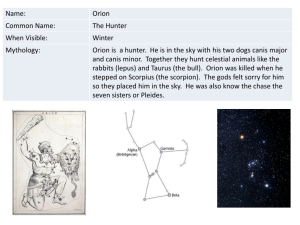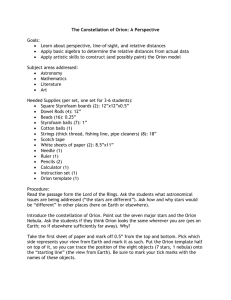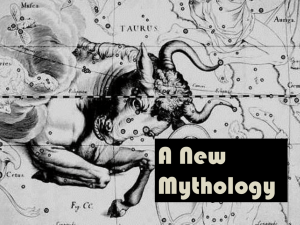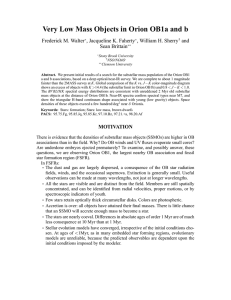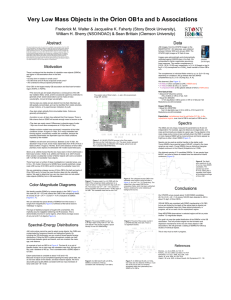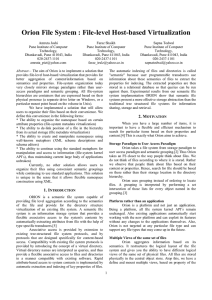Astronomical Imaging: Overview
advertisement
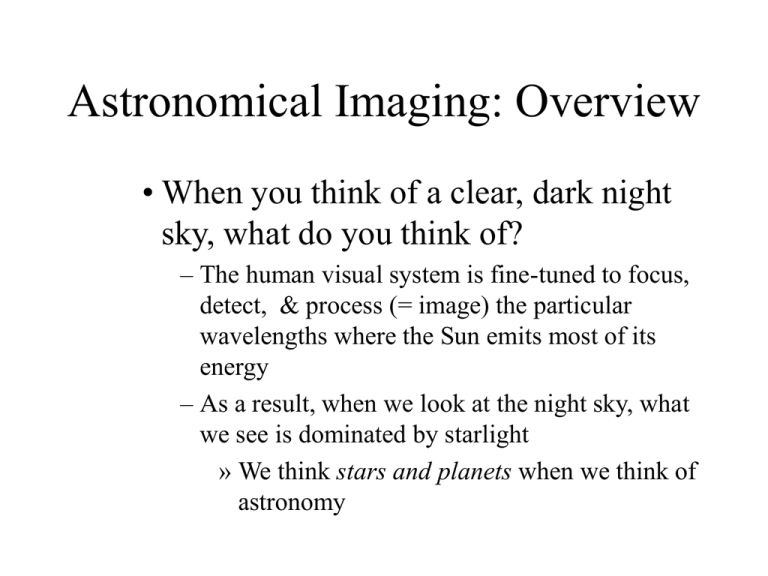
Astronomical Imaging: Overview • When you think of a clear, dark night sky, what do you think of? – The human visual system is fine-tuned to focus, detect, & process (= image) the particular wavelengths where the Sun emits most of its energy – As a result, when we look at the night sky, what we see is dominated by starlight » We think stars and planets when we think of astronomy The Night Sky: Orion This is approximately what you can see with your unaided eye when you look at Orion on a clear night Magnitudes • Magnitudes: a “backwards,” logarithmic scale to measure the brightnesses of stars • For each increase of 1 magnitude, an object is fainter by a factor of 2.5 – an increase of 5 magnitudes is a factor 100 decrease in brightness – an increase of 2.5 magnitudes is a factor 10 decrease in brightness • magnitude = -2.5*log(F/F0) – F and F0 represent the number of photons/second received from an object and reference Magnitudes and Human Vision • Sensitivity of human vision is limited (in large part) by the length of time your brain is willing to wait to receive and interpret the signals from the eye – The brightest stars have magnitudes of about 0 » (well, OK: the magnitude of Sirius is -1) » Venus gets as bright as -4! – The faintest stars you can see have magnitudes of about 5 • What if you could have your retina store up the signals it detects, then report them to the brain? You might see this when you look at Orion! Note that not all stars are the same color Betelgeuse (a red supergiant) Rigel (a blue supergiant) Furthermore: visible light is a small part of the whole story Multiwavelength astronomy • All-sky views at various wavelengths • Note the dominance of the Milky Way (the galaxy where our solar system is located) Gamma Ray X-ray Visible Also note that stars are only one ingredient in a galaxy! Infrared Radio Waves Images from NASA The Orion Nebula: Stellar Nursery The constellation of Orion (wide-field optical) The Orion Nebula (Hubble Space Telescope optical) Three views of the young stars in Orion Orion Nebula region left: optical (HST); center: infrared (2MASS); right: Xray (Chandra)
